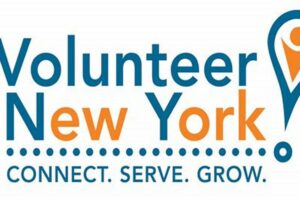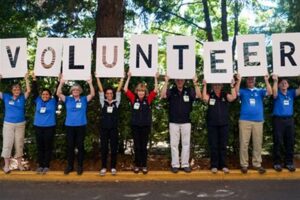Table of Contents
In the face of devastation caused by natural disasters or humanitarian emergencies, the collective response of humanity shines through the selfless acts of volunteers. By volunteering for disaster relief efforts, individuals have the power to bring solace, stability, and hope to communities struggling to recover.
Disaster relief volunteerism not only offers immediate assistance but also fosters long-term resilience and recovery. It’s a testament to the human spirit’s unwavering commitment to helping those in need, breaking barriers, and bridging gaps during challenging times.
The path to becoming a disaster relief volunteer begins with recognizing the profound impact that one person can make in the face of adversity. It’s about stepping forward, embracing empathy, and channeling compassion into tangible actions that alleviate suffering and restore hope.
Volunteer for Disaster Relief
Selflessly serving communities in need during times of crisis.
- Hearts of Compassion: Volunteers driven by empathy and care.
- Helping Hands: Practical assistance in recovery and rebuilding efforts.
- Strength in Unity: Collaboration and teamwork to overcome challenges.
- Hope Providers: Restoring optimism and resilience in affected communities.
- Lifelines of Support: Offering emotional and psychological assistance.
- Bridging Gaps: Connecting resources and aid to those who need it most.
- Advocates for Change: Raising awareness and advocating for long-term solutions.
- Catalysts of Recovery: Empowering communities to rebuild stronger.
- Agents of Change: Creating lasting positive impact through collective action.
By volunteering for disaster relief, individuals become beacons of hope, resilience, and solidarity in the face of adversity, making a tangible difference in the lives of those impacted by crises.
Hearts of Compassion: Volunteers driven by empathy and care.
At the core of disaster relief volunteerism lies the boundless compassion and empathy of individuals who step forward to help those in need. These volunteers are driven by a profound understanding of the suffering and challenges faced by communities struck by disaster. They are motivated by a desire to alleviate pain, provide comfort, and restore hope in the midst of devastation.
Their compassion extends beyond mere sympathy; it translates into tangible actions that make a real difference in the lives of those affected. They offer a listening ear, a helping hand, and a shoulder to lean on. They work tirelessly to meet the immediate needs of survivors, providing food, shelter, medical care, and emotional support.
Disaster relief volunteers recognize that empathy is not just a feeling, but a catalyst for positive change. They use their compassion to connect with survivors on a human level, building bridges of understanding and trust. They strive to create a sense of community and solidarity, reminding survivors that they are not alone in their struggle.
The empathy and care demonstrated by disaster relief volunteers serve as a beacon of hope for survivors, reminding them that there is still kindness and compassion in the world. This compassion has the power to heal wounds, rebuild lives, and restore faith in humanity.
In the face of overwhelming adversity, the compassion of disaster relief volunteers shines through, inspiring others to join the cause and making a lasting impact on the lives of those they serve.
Helping Hands: Practical assistance in recovery and rebuilding efforts.
Disaster relief volunteers are not just compassionate individuals; they are also agents of practical assistance, providing tangible support to communities in need. Their helping hands are essential in the recovery and rebuilding process, as they work alongside survivors to restore normalcy to their lives.
In the immediate aftermath of a disaster, volunteers may be involved in search and rescue operations, helping to locate and evacuate survivors trapped in debris or dangerous conditions. They may also assist in distributing food, water, and other essential supplies to those who have lost everything.
As the recovery process progresses, volunteers play a crucial role in cleaning up debris, repairing damaged homes and infrastructure, and providing logistical support. They may also offer emotional and psychological assistance to survivors, helping them to cope with the trauma they have experienced.
In the long-term, disaster relief volunteers may be involved in rebuilding efforts, working with communities to create more resilient infrastructure and systems. They may also advocate for policies and programs that reduce the risk of future disasters and support sustainable development.
The practical assistance provided by disaster relief volunteers is invaluable in helping communities recover from the devastation of a disaster and rebuild their lives.
Strength in Unity: Collaboration and teamwork to overcome challenges.
Disaster relief efforts are often characterized by an outpouring of support from volunteers from all walks of life, working together to overcome the challenges posed by a disaster. This collaboration and teamwork are essential for effective and efficient response and recovery.
Volunteers from different organizations and backgrounds bring a diverse range of skills, knowledge, and experiences to the relief effort. This diversity is a strength, as it allows volunteers to adapt to changing needs and circumstances and find creative solutions to problems.
Volunteers also work closely with affected communities, involving them in the decision-making process and ensuring that their needs are met. This collaboration fosters a sense of ownership and empowerment among survivors, helping them to take an active role in their own recovery.
By working together, volunteers can accomplish more than they could individually. They can pool their resources, share information, and coordinate their efforts to maximize their impact. This collaboration also helps to create a sense of community and solidarity, which is essential for healing and recovery.
The strength of unity and the power of teamwork are key factors in the success of disaster relief efforts, enabling volunteers to overcome challenges and make a real difference in the lives of those affected by disaster.
Hope Providers: Restoring optimism and resilience in affected communities.
In the aftermath of a disaster, hope can be a scarce commodity. Survivors may feel overwhelmed by loss, grief, and uncertainty about the future. Disaster relief volunteers play a crucial role in restoring hope and resilience in affected communities.
- Showing Care and Compassion:
By demonstrating genuine care and compassion, volunteers can help survivors feel seen, heard, and supported. This can make a world of difference in lifting spirits and providing a sense of hope.
- Offering Practical Assistance:
Providing practical assistance, such as distributing food, water, and shelter, can help survivors meet their basic needs and begin to rebuild their lives. This tangible support can give survivors a sense of hope for the future.
- Sharing Stories of Resilience:
Volunteers can share stories of resilience and recovery from previous disasters, inspiring survivors to believe that they too can overcome their challenges. These stories can provide hope and motivation during difficult times.
- Empowering Survivors:
By involving survivors in the recovery process and giving them a voice in decision-making, volunteers can help survivors feel empowered and regain control over their lives. This empowerment can foster hope and resilience.
By restoring hope and resilience in affected communities, disaster relief volunteers help survivors to look beyond the immediate crisis and envision a brighter future. This hope is essential for long-term recovery and rebuilding.
Lifelines of Support: Offering emotional and psychological assistance.
Disasters can take a significant toll on the emotional and psychological well-being of survivors. Disaster relief volunteers play a vital role in providing emotional and psychological support to help survivors cope with the trauma they have experienced.
- Active Listening and Empathy:
Volunteers can provide emotional support by simply listening to survivors’ stories and empathizing with their experiences. This can help survivors feel understood and validated.
- Crisis Counseling:
Some volunteers may have training in crisis counseling or mental health support. They can provide immediate assistance to survivors who are struggling with acute stress, anxiety, or depression.
- Connecting to Resources:
Volunteers can help survivors connect with mental health professionals, support groups, and other resources that can provide ongoing emotional and psychological support.
- Promoting Self-Care:
Volunteers can encourage survivors to engage in self-care activities, such as exercise, relaxation techniques, and spending time with loved ones. These activities can help survivors cope with stress and improve their overall well-being.
By offering emotional and psychological support, disaster relief volunteers help survivors to process their experiences, cope with their emotions, and rebuild their lives. This support is essential for long-term recovery and healing.
Bridging Gaps: Connecting resources and aid to those who need it most.
In the aftermath of a disaster, resources and aid often flow into affected communities. However, these resources may not always reach the people who need them most. Disaster relief volunteers play a crucial role in bridging the gaps and ensuring that aid is distributed equitably and efficiently.
- Needs Assessment:
Volunteers can conduct needs assessments to identify the most pressing needs of survivors. This information can then be used to direct resources and aid to where they are needed most.
- Community Outreach:
Volunteers can reach out to vulnerable and marginalized populations who may be at risk of being overlooked. This includes people with disabilities, the elderly, and people living in remote or isolated areas.
- Coordination and Collaboration:
Volunteers can work with local organizations, government agencies, and other relief groups to coordinate the distribution of aid and avoid duplication of efforts.
- Transportation and Logistics:
Volunteers can help transport aid supplies to remote or inaccessible areas. They can also assist with the logistics of distributing aid, such as setting up distribution centers and managing inventory.
By bridging gaps and connecting resources and aid to those who need it most, disaster relief volunteers ensure that everyone affected by a disaster has the support they need to recover and rebuild their lives.
Advocates for Change: Raising awareness and advocating for long-term solutions.
Disaster relief volunteers are not only responders to immediate crises; they are also advocates for change. They recognize that disasters are often the result of systemic issues and that long-term solutions are needed to prevent future disasters and mitigate their impact.
- Raising Awareness:
Volunteers can raise awareness about the causes and consequences of disasters, and the importance of disaster preparedness and risk reduction. They can do this through public speaking, social media, and other outreach activities.
- Policy Advocacy:
Volunteers can advocate for policies and programs that address the root causes of disasters and promote sustainable development. This includes advocating for investments in infrastructure, education, and social safety nets.
- Community Engagement:
Volunteers can engage with communities to identify and address local vulnerabilities and build resilience. This includes working with communities to develop disaster preparedness plans and implement risk reduction measures.
- Research and Innovation:
Volunteers can support research and innovation in disaster risk reduction and recovery. This includes developing new technologies, tools, and approaches to help communities better prepare for and respond to disasters.
By advocating for change, disaster relief volunteers work to create a more resilient world where communities are better equipped to withstand and recover from disasters.
Catalysts of Recovery: Empowering communities to rebuild stronger.
Disaster relief volunteers are not just temporary helpers; they are catalysts of recovery who empower communities to rebuild stronger and more resilient.
- Community Engagement:
Volunteers can engage with communities to identify their needs and priorities for recovery. This includes involving community members in decision-making processes and ensuring that their voices are heard.
- Capacity Building:
Volunteers can provide training and support to local organizations and community members to help them develop the skills and knowledge they need to lead and manage the recovery process.
- Resource Mobilization:
Volunteers can help communities access resources and funding to support their recovery efforts. This includes connecting communities with government agencies, non-profit organizations, and other sources of support.
- Advocacy and Policy Support:
Volunteers can advocate for policies and programs that support community-led recovery. This includes advocating for flexible funding, technical assistance, and other resources that can help communities rebuild stronger.
By empowering communities to rebuild stronger, disaster relief volunteers help to create more resilient societies that are better prepared to withstand and recover from future disasters.
Agents of Change: Creating lasting positive impact through collective action.
Disaster relief volunteers are not just individuals providing temporary assistance; they are agents of change who work collectively to create a lasting positive impact on the communities they serve.
Through their combined efforts, disaster relief volunteers can:
- Accelerate Recovery: By working together, volunteers can help communities recover from disasters more quickly and efficiently.
- Promote Resilience: By implementing long-term recovery and risk reduction measures, volunteers can help communities become more resilient to future disasters.
- Foster Community Cohesion: By bringing people together to work towards a common goal, volunteers can help strengthen community bonds and foster a sense of unity.
- Raise Awareness: By sharing their experiences and advocating for change, volunteers can raise awareness about the importance of disaster preparedness and response.
The collective actions of disaster relief volunteers can create a ripple effect, inspiring others to get involved and make a difference. By working together, volunteers can create a more just and compassionate world where communities are better prepared to face and recover from disasters.
The impact of disaster relief volunteers extends far beyond the immediate response to a crisis. Their dedication and commitment to creating lasting positive change make them true agents of change.
FAQ
Have questions about volunteering for disaster relief? Here are some frequently asked questions and answers to help you get started:
Question 1: How can I volunteer for disaster relief?
Answer: There are many ways to get involved in disaster relief volunteering. You can contact local organizations, such as the Red Cross or Salvation Army, or search for volunteer opportunities online. You can also volunteer with faith-based organizations or community groups.
Question 2: What skills are needed to volunteer for disaster relief?
Answer: While specific skills may vary depending on the type of disaster and the organization you’re working with, some common skills that are helpful include first aid, CPR,炊き出し, and disaster response training. However, many volunteer opportunities are open to people with no prior experience, and training is often provided.
Question 3: What kind of tasks will I be doing as a disaster relief volunteer?
Answer: Volunteer tasks can vary widely depending on the disaster and the needs of the community. Common tasks include distributing food and water, providing medical assistance, cleaning up debris, and helping with repairs. You may also be involved in emotional support or administrative tasks.
Question 4: Do I need to be physically fit to volunteer for disaster relief?
Answer: While some volunteer tasks may require physical strength or endurance, there are many opportunities that are accessible to people of all fitness levels. Be sure to discuss any physical limitations you have with the organization you’re volunteering with.
Question 5: How long will I need to volunteer?
Answer: The length of time you volunteer for will depend on the disaster and the organization you’re working with. Some volunteer opportunities may only require a few hours of your time, while others may require a longer commitment. Be sure to discuss your availability with the organization before signing up.
Question 6: What should I bring with me when I volunteer for disaster relief?
Answer: Be sure to pack comfortable clothing and sturdy shoes that you can get dirty. You may also want to bring a hat, sunscreen, insect repellent, and a reusable water bottle. If you have any specific medical needs, be sure to bring any necessary medications and supplies with you.
Question 7: How can I stay safe while volunteering for disaster relief?
Answer: Safety is always a top priority for disaster relief volunteers. Be sure to follow all safety instructions provided by the organization you’re working with. This may include wearing protective gear, avoiding hazardous areas, and being aware of potential risks.
Closing Paragraph for FAQ:
Volunteering for disaster relief can be a rewarding and fulfilling experience. By giving your time and skills to help those in need, you can make a real difference in their lives. If you are interested in volunteering, reach out to a disaster relief organization today and learn how you can get involved.
In addition to the information provided in the FAQ, here are some additional tips for disaster relief volunteers:
Tips
Here are some practical tips for disaster relief volunteers to ensure a safe and effective volunteering experience:
Tip 1: Be Prepared:
Before volunteering, take some time to learn about the disaster, the needs of the community, and the organization you’ll be working with. Familiarize yourself with the safety protocols and guidelines provided by the organization.
Tip 2: Be Flexible and Adaptable:
Disaster relief situations are often fluid and unpredictable. Be prepared to adapt to changing conditions and tasks. Be open to taking on different roles and responsibilities as needed.
Tip 3: Communicate Effectively:
Clear and effective communication is crucial in disaster relief efforts. Listen attentively to instructions and ask questions if you’re unsure about something. Keep your team updated on your progress and any challenges you encounter.
Tip 4: Take Care of Yourself:
Volunteering for disaster relief can be physically and emotionally demanding. Make sure to prioritize your own well-being. Get enough rest, eat nutritious food, and stay hydrated. Take breaks when you need them and seek support from fellow volunteers and team leaders.
Closing Paragraph for Tips:
By following these tips, disaster relief volunteers can contribute effectively to the recovery efforts while ensuring their own safety and well-being.
Volunteering for disaster relief is a humbling and rewarding experience. By offering your time, skills, and compassion, you can make a real difference in the lives of those affected by disaster. Remember to stay informed, be prepared, and take care of yourself and your team members.
Conclusion
In times of crisis and devastation, disaster relief volunteers emerge as beacons of hope, resilience, and compassion. They embody the human spirit’s unwavering commitment to helping those in need, breaking down barriers, and bridging gaps during challenging times.
Through their selfless acts, disaster relief volunteers make a tangible difference in the lives of those affected by disasters. They provide immediate assistance, restore hope and resilience, offer emotional support, connect resources to those who need them most, and advocate for long-term solutions. They empower communities to rebuild stronger and create a more just and compassionate world.
The impact of disaster relief volunteers extends far beyond the immediate response to a crisis. Their dedication and commitment to creating lasting positive change make them true agents of change. By volunteering their time, skills, and compassion, they inspire others to do the same, creating a ripple effect of kindness and solidarity.
If you are considering volunteering for disaster relief, know that you have the power to make a real difference. Your compassion, empathy, and willingness to help can bring solace, stability, and hope to communities struggling to recover.
Join the ranks of disaster relief volunteers and become a catalyst for positive change. Together, we can create a world where communities are better prepared to face and recover from disasters, and where compassion and unity prevail.
Remember, every act of kindness, every helping hand, and every voice raised in support makes a difference. By volunteering for disaster relief, you are not just providing assistance; you are restoring hope, rebuilding lives, and making a lasting impact on the world.






